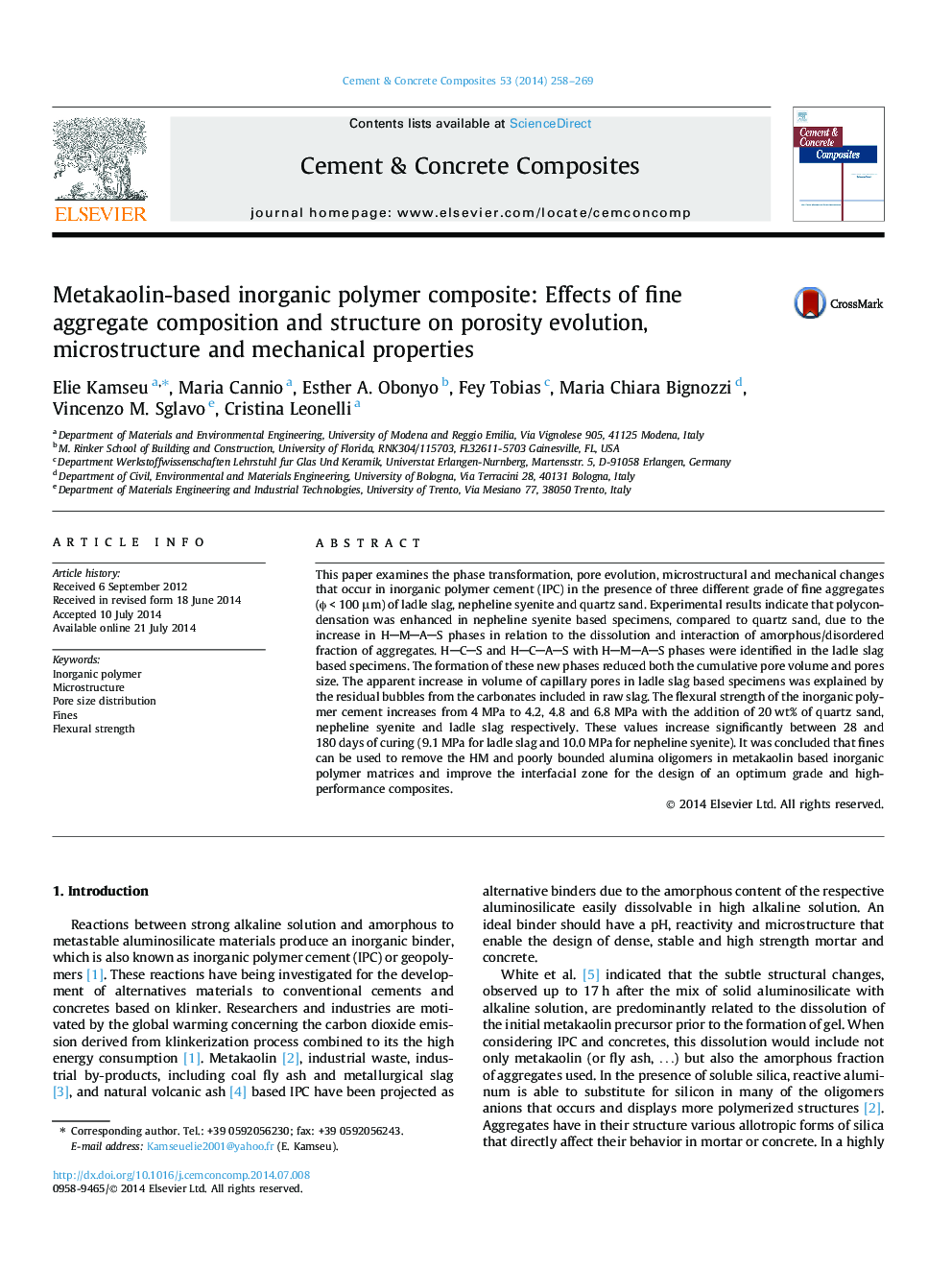| Article ID | Journal | Published Year | Pages | File Type |
|---|---|---|---|---|
| 1454563 | Cement and Concrete Composites | 2014 | 12 Pages |
This paper examines the phase transformation, pore evolution, microstructural and mechanical changes that occur in inorganic polymer cement (IPC) in the presence of three different grade of fine aggregates (ф < 100 μm) of ladle slag, nepheline syenite and quartz sand. Experimental results indicate that polycondensation was enhanced in nepheline syenite based specimens, compared to quartz sand, due to the increase in HMAS phases in relation to the dissolution and interaction of amorphous/disordered fraction of aggregates. HCS and HCAS with HMAS phases were identified in the ladle slag based specimens. The formation of these new phases reduced both the cumulative pore volume and pores size. The apparent increase in volume of capillary pores in ladle slag based specimens was explained by the residual bubbles from the carbonates included in raw slag. The flexural strength of the inorganic polymer cement increases from 4 MPa to 4.2, 4.8 and 6.8 MPa with the addition of 20 wt% of quartz sand, nepheline syenite and ladle slag respectively. These values increase significantly between 28 and 180 days of curing (9.1 MPa for ladle slag and 10.0 MPa for nepheline syenite). It was concluded that fines can be used to remove the HM and poorly bounded alumina oligomers in metakaolin based inorganic polymer matrices and improve the interfacial zone for the design of an optimum grade and high-performance composites.
